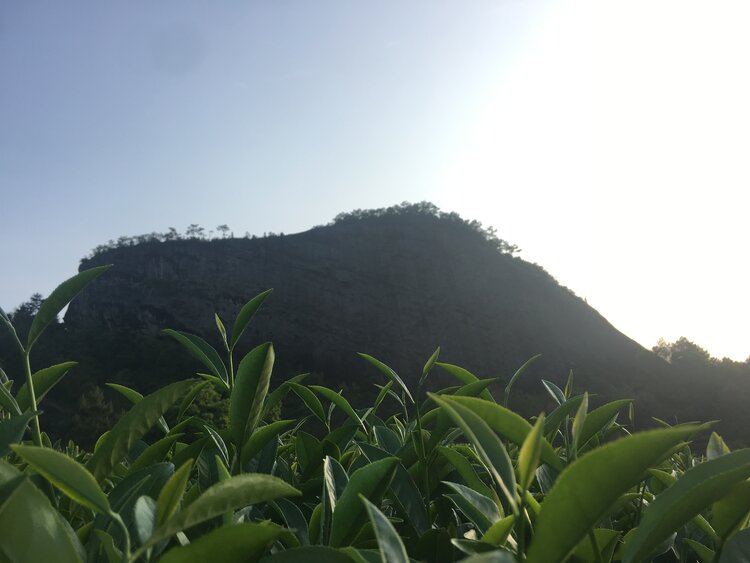We love to hear your experiences with our teas. This piece about our Qi Lan was written by Eli (@elizabeth17velazquez) originally in Spanish, and adapted to english by Seth (@nowenluan). Elizabeth is a part of our tea community in Mexico with our partners and friends at Soy Te.
Have words of your own about our tea you’d like to share? You’re welcomed to send us a note, we’d love to hear from you!
Among the mysterious rocks of Zheng Yan 正 岩 "The true cliff" in Wu Yi Shan, there are hidden treasures that illuminate, with their bright greens and flowers, a lucid dreamlike moment that sharpens our senses.
According to Shunan Teng, expert in the world of tea, the complexity and intangible value of Rock Wu Longs lies in the rich biodiversity of its terroir, a commonality shared throughout the Historical Mountains of China.
Throughout the centuries, these mountains have been selected with careful mastery to complement the study and preservation of the special tea trees that grow within them. One particular example are the tea plants of Qi Lan ("rare orchid") from the terroir Shi Zi Feng. According to Teng, terroir is something that must be respected in order to classify teas with the correct terminology. Makes sense, right?
One interesting detail about the different places where tea is harvested in all of the Historic Mountains of China, is that they are divided into two: the inner mountain and the outer mountain, which is precisely what makes Wu Yi Shan's “true cliff” teas one of the most special in the world.
These special tea leaves were about to begin their story. The first encounter with the gaiwan was enough to infuse their story with ours in a moment of warmth.
Its leaves gave off subtle aromas of wildflowers that hinted at its origin on the peak of the “lion's top”. As the water boiled it transformed the room's landscape with white clouds of steam, which danced with the wind when the kettled poured. Who was Qi Lan "rare orchid" Shi Zi Feng? Was it that natural reflection of Wu Yi Shan? Or was it perhaps a fleeting memory finding its place in us?
Between fleeting infusions, a new journey began, on an afternoon on the other side of the world as we drank tea.
As soon as the first infusion took place, the clouds of steam soon opened to show us among their floral fragrances of fresh orchids, the memory of the tea's origin in that landscape on the “lion's top”. Giant rocks on the edge of the cliff appeared as beautiful emblems of that new place we were visiting. New questions arose, but as we drank the second infusion, everything seemed to clear up. The image of beauty was strengthened by those giant rocks, where the strands of Qi Lan Shi Zi Feng were like the roots hugging the "lion's top" rock as we took effervescent minerals from it in our mouth. But without a doubt, there was still more to observe. It was a clash between softness and balance in high environments of fresh flowers, it was the beautiful indulgence of an imaginary space in our mouth where everything grows and everything emerges.
Qi Lan Shi Zi Feng's fully open leaves corroborated its authenticity. The third infusion spoke to us almost completely of its totality in the codex of its balanced and prominent body without losing its aroma. Suddenly, its flavors of flowers became more evident as well as a salty note which helped to show us the rest of the original landscape formed in the second infusion: Qi Lan’s leaves were like the wise roots of a leafy tree with white flowers that hugged the rocks on the edges of the cliff. The moisture of tiny water molecules walked between the roots to nourish the leaves and with its flowers give them fragrance. That was the offspring being born from the rock: a lion sleeping peacefully and nurturing for us the leaves that today are the fruit of a lively and warm moment of infusion, preserved in memory until next time.

